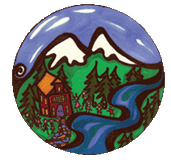The Sensitive Periods
Sensitive Periods are times during the child’s development when he shows strong attraction toward a particular learning, directing the child with an irresistible impulse to certain activities. Sensitive periods are transitory and last different lengths of times; some overlap and some are parallel. When the aim is accomplished this special sensitivity fades and the interest disappears, usually to be replaced by another.
During this intense time of self-creation, the child works tirelessly repeating an activity or series of activities toward the development of an inner psychic need. Some cues to observing a special sensitivity are:
The child’s aura of joy
The child does the activity for the process of the work, not for the sake of the result
The child repeats the activity tirelessly toward perfecting that skill
The child needs a safe and rich environment in which to do this silent, inner work
When the child cannot follow these needs, the skill will not be acquired as easily; later, a more conscious, tiring effort is needed. Below you will find all the different sensitive periods children go through during their first plane of development, birth - six years of age, along with a brief description of what that period will look like and what ages it typically occurs at:
LANGUAGE Birth - Age 6
This is the longest sensitive period. It is believed to begin in utero and lasts throughout the lifespan. The infant is spontaneously able to take in human language; more specifically he absorbs his native language. This is vital to his adaptation to his culture. The child effortlessly takes in his language without formal instruction. A rich environment is essential to the child’s language development. At birth language is auditory. The infant watches the mouth. He moves toward speaking first through making single sounds, then phrases, and sentences. At 2 years, the child experiences an “explosion into language” when all acquired skills come together allowing the child to speak. It is imperative we use correct grammar and enunciate clearly to model correct language. At 4 - 5 years, the sensitive period for language is focused on reading and writing. It is at this stage a child naturally and easily learns a second language.
ORDER Birth - Age 5, most prominent at ages 2 - 3
This sensitive period coincides with and is related to the sensitive period for language. His strong need for things to be in their places allows him to develop a framework within which to grow. If things are changed or out of order or a routine is changed, the child’s security is shaken. This often manifests itself as difficult behavior, even a tantrum. The child uses repetition to bring about order. To accommodate this need we must slow our pace to the rhythm of the child’s. The sensitive period for math (4-7) overlaps and coincides with this sensitivity for order.
MOVEMENT Birth - Age 4
At first movements are random and uncontrolled. They quickly become more conscious as the body and the mind work together. Movement becomes purposeful and refined. The child repeats the activity until he has mastered the skill.
REFINEMENT OF THE SENSES Birth - Age 6 (strongest at ages 2.5 - 4.5)
The child is delighted by and attracted to Sensorial experiences. His sense of touch is acute. The manipulation of materials enables the child to discern their qualities. The Sensorial materials allow for repetition and thus the refinement of the senses. This is the base on which the child builds his intellect.
DETAIL Ages 1 - 4
The child is highly sensitive to small objects and to detail. He marvels at the wonders of the world. It is important that we are exact in our presentations, in our speaking, and in our movement.
MUSIC Ages 2 - 6
The child is spontaneously interested in the nuances of music. If exposed to musical experiences the child’s easily develops a sense for rhythm, pitch, and melody.
GRACE AND COURTESY Ages 2.5 - 6
The child delights in learning and imitating polite and considerate behavior. Through this imitation he internalizes this behavior. It is not until later that this behavior is related to his moral reasoning. The lessons of Grace and Courtesy are another step toward independence.
SOCIAL BEHAVIOR Ages 3.5 - 6
The child’s need to be an active member in society leads him to learn how to interact with others. The lessons of Grace and Courtesy aid in the child’s comfort participating in his community.
WRITING Ages 3.5 - 4.5
With repeated appropriate training the child naturally moves from drawing activities to reproducing the shapes of letters and numbers.
READING Ages 4.5 - 5.5
With repeated exposure to pre-reading activities, letter sounds, word formation, and vocabulary, the child experiences an “explosion into reading.” The child responds to reading instruction at this stage as well.
MATH Ages 4 - 7
The child forms his concepts of quantity, symbols, and operations. With the presentation of concrete materials, the child is spontaneously interested in and develops a clear inner understanding of mathematics.
SPATIAL RELATIONSHIPS (GEOGRAPHY AND MECHANICS) Ages 4 - 8
The child forms inner impressions about relationships and interrelationships, relationships in space and time, physical relationships of places.
In the second plane of development, 6 - 12, the sensitive periods are not as distinct. We begin to see this in our classroom with the 5-6 year olds, and they are listed below:
IMAGINATION: re-triggers the child’s exploration especially in science, math, and culture.
SOCIAL MEMBER: this starts with strong peer importance, then fades.
MORAL VALUES: the child has a strong need to clarify what is right and wrong.
VOCATION: In the 3rd plane of development, 12 - 18, the child becomes interested in his life work.

